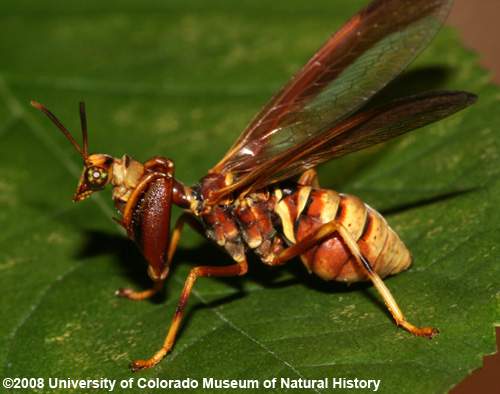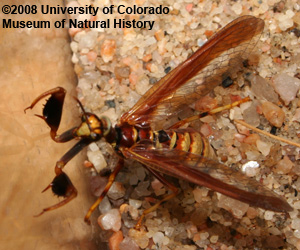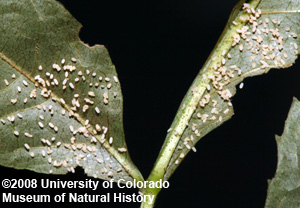OBJECT OF THE MONTH - MARCH 2008
Mantispid (Climaciella brunnea)

This specimen of Climaciella brunnea (UCMC 0056000) is only the second one in our collection from the state of Colorado and the first specimen from Colorado's Front Range. This particular species mimics a paper wasp.
The mantispid Climaciella brunnea is a rather unusual insect. Although they have grasping mantid-like raptorial front legs they are not closely related to mantids (praying mantises).

Close-up view of the raptorial front legs of Climaciella brunnea.
Mantispids are in the order Neuroptera, and thus more closely related to the green lacewings that come to porch lights in the summer than to mantids. Their front legs are used in the same way as a mantid's, however, in catching small insect prey for food.
C. brunnea has a very interesting life cycle. During their 3-4 week adult life stage, inch-long females may lay as many as several thousand short-stalked eggs, grouped on the underside of plant leaves. The eggs hatch and each tiny larva waits for a passing spider.

Short-stalked eggs of Climaciella brunnea laid on the underside of a leaf.
The larva then boards the spider and rides around on it until the spider lays eggs. At this time the tiny mantispid larva crawls off the spider and into the egg sac, where it feeds on the spider eggs in the security of the silken spider egg sac.
Different species of mantispids specialize on different species of host spiders. C. brunnea larvae are known to parasitize the eggs of wolf spiders.


